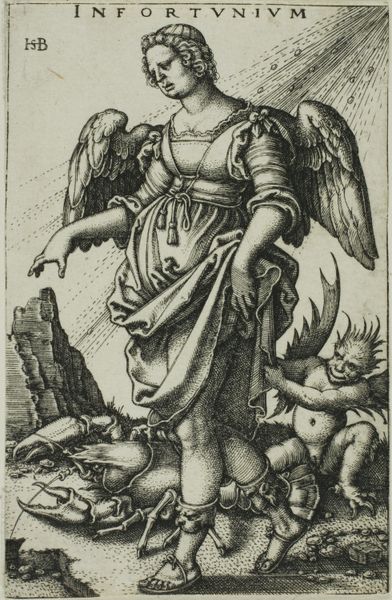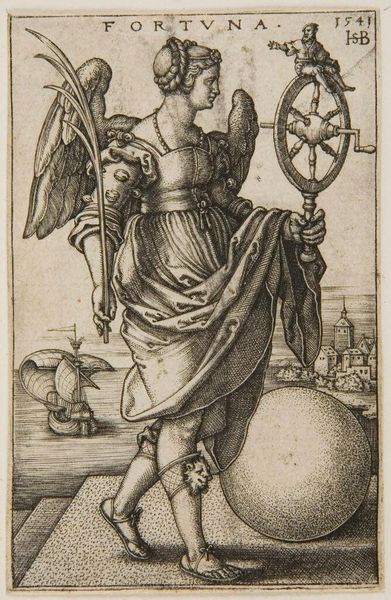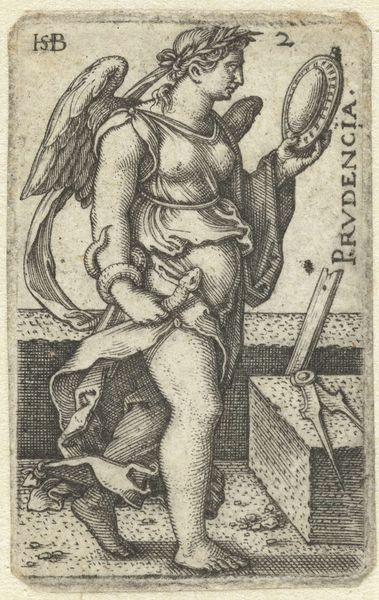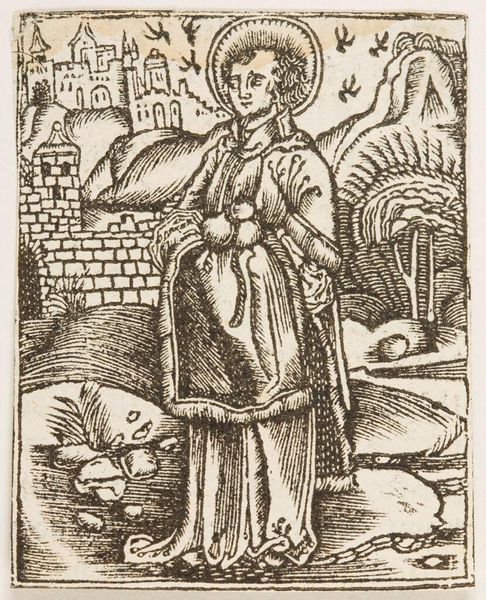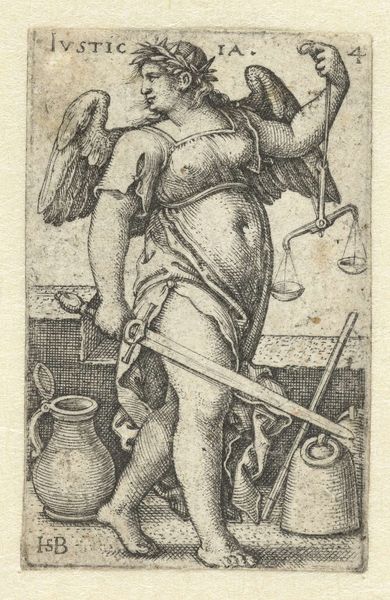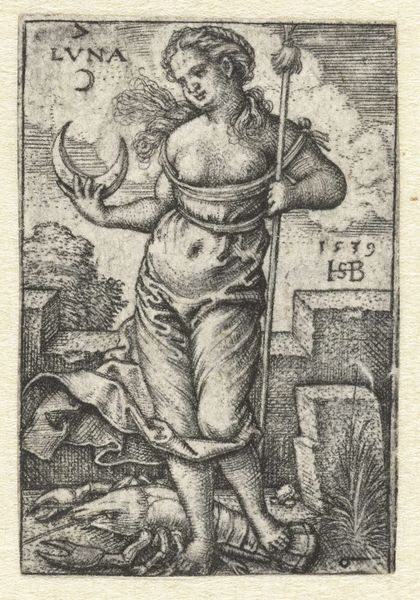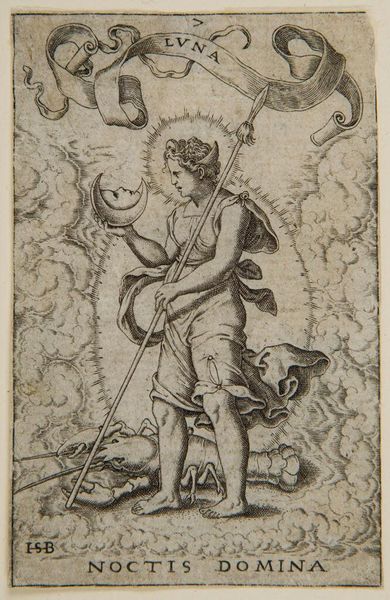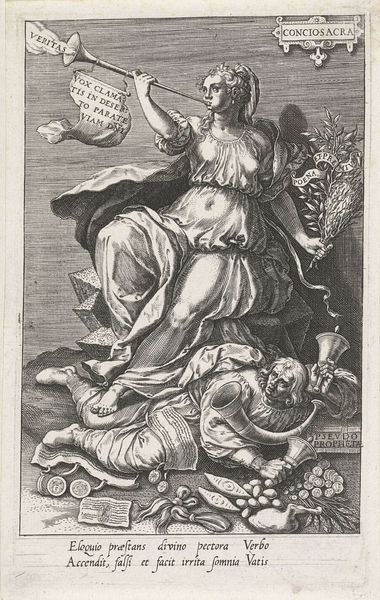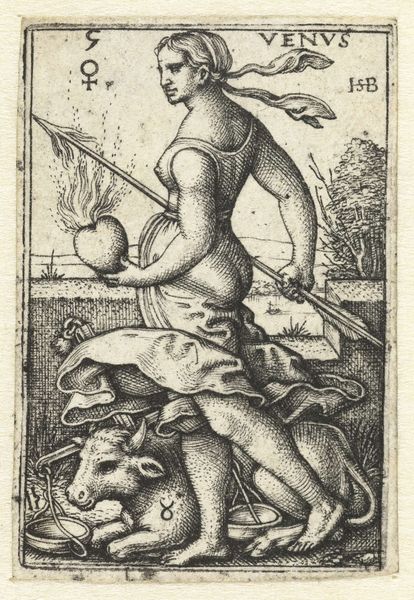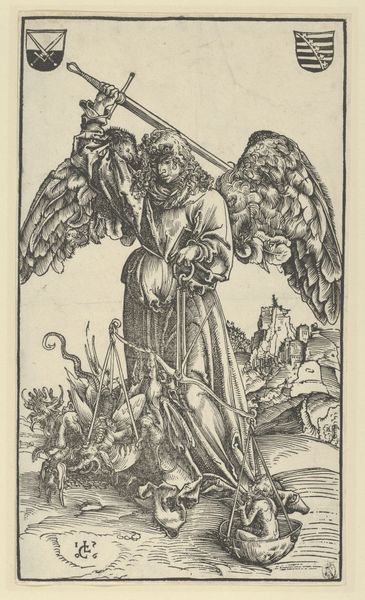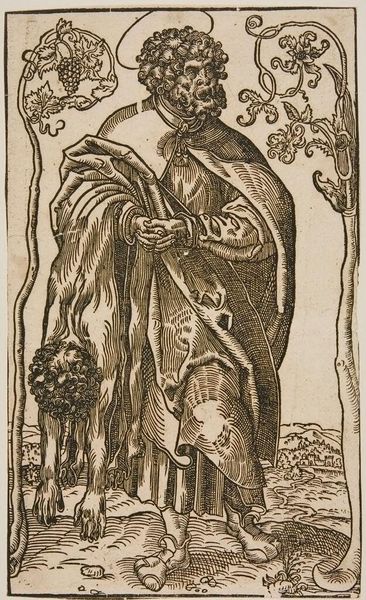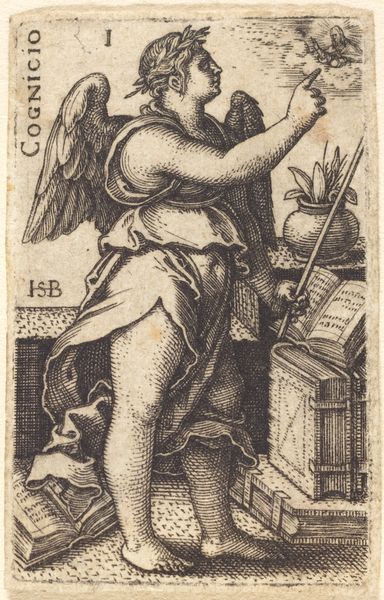
Copyright: CC0 1.0
Curator: Here we have Sebald Beham's engraving, "Misfortune." Note the winged figure dominating the scene, wings spread wide. Editor: My first impression is one of starkness, the sharp lines really define the textures of fabric, stone, and flesh. It's all rendered with such meticulous detail using what appears to be a rather rudimentary process. Curator: Beham, active during the Reformation, often critiqued social norms through his prints. This piece reflects anxieties about fate and morality prevalent in 16th-century Europe. Editor: The materials—the metal plate, the ink, the paper—and the labor involved are so present. You can almost feel the pressure of the burin creating those crisp lines. It speaks to me about the democratization of images through printmaking. Curator: Absolutely. The dissemination of prints allowed for broader engagement with complex allegories like this. The figure, the devilish imp, the lobster all become part of a larger narrative easily consumed by the public. Editor: Looking at it now, I see the crab almost crushed underfoot, a reminder of the tangible consequences of choices and the systems that create misfortune. Curator: A potent reminder that art can reflect both the personal and the political dimensions of our lives. Editor: And how the means of making that art intertwine with its message.
Comments
No comments
Be the first to comment and join the conversation on the ultimate creative platform.
